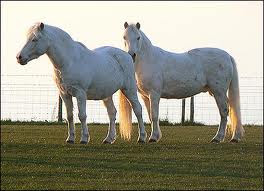Of the
Various Types of Horses in the world, the Arab horse may be considered as the embryo of the horses that exist today. Horse found in Southeast Asia region including the eastern race. This is different from a horse race that has a larger skull.
From the shape of his face, horse races are the descendants of horses suspected eastern Mongols. This horse is the offspring of Przewalski species found in 1879 in Central Asia. Its spread into Asia region may be performed by a Hindu nation.
Horse found in Indonesia, the condition is influenced by the tropical climate and the environment. Her height ranged from 1.15 to 1.35 meters, thus belonging to the type of bangs. Forms are generally large head with flat face, straight, light eyes and ears of living small. Other characteristics, upright neck shape and width. Generally strong neck, back straight and strong hips. Location of high and oval-shaped tail, chest width, arch-shaped ribs are harmonious. Her legs were muscular strength, forehead and the joints well. While the form of small nails and was in the palm of the strong. If the horse is standing, it would seem his lack of match (not good), because the front legs are more developed when compared with the hind legs. Attitudes like these have stood on various types of horses in South East Asia.
Diversity in Indonesia enriched horse again after the arrival of Europeans. Portuguese fleet that came to the eastern part of Indonesia in the 16th century to look for spices, yinggahi to several ports in the region, among others, North Sulawesi. At the time that's stopping them introducing a horse they bring to the local population. There was exchange of goods between residents and Portuguese traders. European horses were then crossed with a horse owned by them. The result of these crosses produced offspring European horses in Minahasa.
In addition to Arab and European equine known in Indonesian, there's more a type of horse called a Mongolian horse, originating from mainland Asia. The horses were then crossed with local equine and produce a new horse, measuring 120 cm high, colored feathers, among others, golden, black and white. This horse is still there in Cirebon and Tengger mountains in East Java.
The types of horses found in Indonesia, among others, horse Napier, Gorontalo and Minahasa horse, horse Sumba, Sumbawa horse, horse bima, Flores horse, horse Sabu, Bread horse (horse Kori), East horse, horse Sumatra, Java, horses, horses Bali and Lombok, Horse Brass.







































